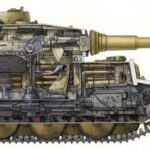What were the Japanese Navy’s perceptions of the US Navy?
What were the Japanese Navy’s perceptions of the US Navy? The Japanese Navy’s perceptions of the US Navy, especially in the lead-up to and during World War II, were shaped by a mix of respect, strategic assessment, and underestimation in certain areas. Here’s a breakdown of these perceptions:
Pre-WWII Perceptions
Respect for Industrial Power:
The Japanese Navy respected the industrial capacity of the United States, which they recognized as a significant advantage in producing ships, planes, and other war materials.
They understood that the US could potentially out-produce Japan in a prolonged conflict, which influenced Japan’s strategy to win decisive early victories.
View of Tactical Competence:
The Japanese saw the US Navy as professional and competent but often rigid in its adherence to doctrine. This perception led the Japanese to believe that innovative and audacious tactics could catch the US off guard.
Technology and Training:
The Japanese admired the US Navy’s technological advancements, such as radar, but initially underestimated its strategic implications.
They also acknowledged the training of US personnel but believed their own training, especially for naval aviators and surface ship crews, was superior.
Potential Weakness in Will:
Some Japanese leaders, influenced by their interpretation of American society, believed that the US public lacked the resolve for a long and costly war. This was a key assumption in their strategy to force a negotiated settlement through rapid and overwhelming early victories.
During WWII
Surprise at Strategic Resilience:
The Japanese were surprised by the speed and scale of the US Navy’s recovery after Pearl Harbor. They underestimated the US Navy’s ability to repair damaged ships, replace losses, and deploy new forces.
Adaptability of US Tactics:
As the war progressed, the Japanese Navy grew to respect the US Navy’s adaptability and coordination. For example, the effective use of aircraft carriers, particularly in the Battle of Midway, showcased US strategic and tactical flexibility.
Superiority in Logistics:
The Japanese Navy came to see the US Navy’s logistical capabilities as a critical strength. The ability of the US to sustain operations across vast distances was unmatched and became a decisive factor in the Pacific theater.
Shift in Technological Balance:
By mid-war, the Japanese realized they had underestimated the importance of radar and other technologies, which gave the US significant advantages in night battles and fleet coordination.
Air Superiority:
The Japanese Navy initially had a high regard for its aviators and aircraft but gradually recognized the growing superiority of US naval aviation, both in terms of quality and quantity.
Conclusion
The Japanese Navy’s perceptions of the US Navy evolved from initial respect mixed with underestimation to a grudging recognition of its adaptability, technological innovation, and logistical might. This evolution mirrored Japan’s broader strategic challenges during the war and underscored the difficulty of achieving their objectives against an opponent with such vast resources and resilience.


